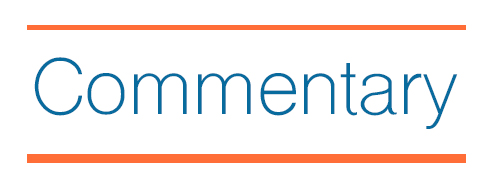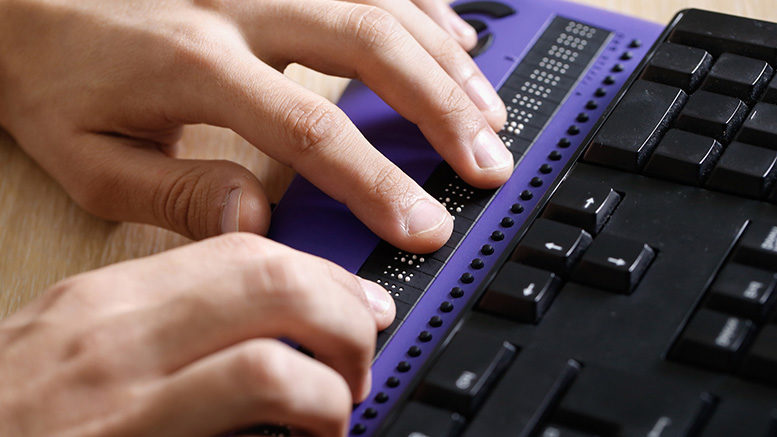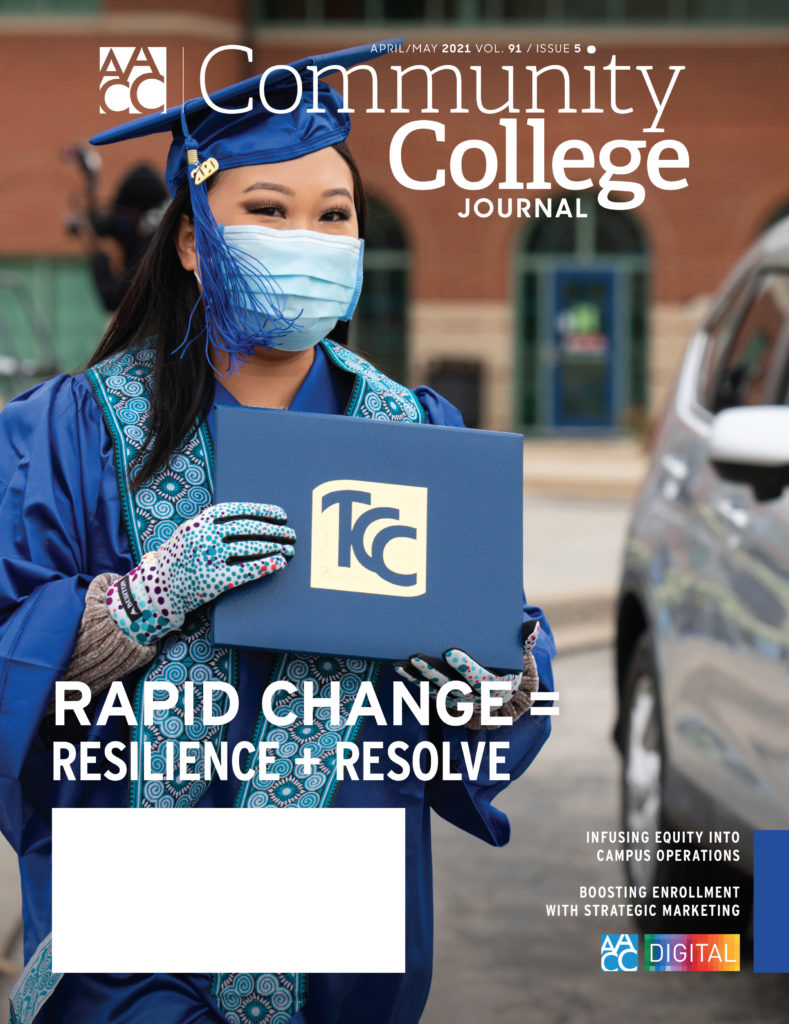Early in 2020, Columbia-Greene Community College (CGCC) in Hudson, New York, joined other academic institutions across the country in pivoting to virtual learning. Only a handful of our faculty had used this modality. Most thought “remote” referred to a TV controller – and certainly were unfamiliar with the terms “synchronous” and “asynchronous.”

Given the pressure to keep the momentum of the spring semester going with as little disruption as possible, faculty without online teaching experience had to default to the same content and course structure employed in face-to-face instruction without the opportunity to engage in careful online course design, thereby placing students with disabilities at a particular disadvantage.
The campus shut down in mid-March, and concerns about how to best serve students with disabilities in the new learning environment spawned discussions about the constructs needed to make online course materials ADA compliant.
Clearly, the challenges of remote learning vary for students with disabilities, depending on their needs. For example, a student with mobility issues may face different hurdles than a peer with attention deficit disorder. A student with low vision may struggle with interactive components of online classes such as chats, and students with hearing impairments may be well served by transcriptions and closed captions for lectures, but video calls may be problematic for those who rely on lip-reading if other participants elect to participate without being on camera.
This article is an excerpt from the April/May issue of Community College Journal, published by the American Association of Community Colleges since 1930.
Because of the myriad issues facing faculty unfamiliar with teaching remotely, the college extended spring break by one week. Staff from accessibility services and information technology began a thorough investigation of what tools were needed to help disabled students make the transition from face-to-face to virtual learning. They recommended purchasing Read and Write and EquatlO. Read and Write, a literacy suite, assists students with reading and writing, while EquatlO, a math suite, helps instructors create accessible math materials and provide an improved “reading” experience for math-based content.
CGCC also adopted Blackboard Ally, a remediation tool instructors use to identify and fix accessibility issues in the content they upload to Blackboard so that the students do not have to request reformatted materials.
The college’s Accessibility Services Office offered training to acquaint faculty with the new software and also covered some basic information for online instruction, such as: accessible formats for text-based handouts, including fonts and colors; descriptive titles for hyperlinks and URLs; and alternative text for images and graphics.
As the first year of virtual classes comes to a close, we offer some key takeaways about best practices for colleges to provide intentional inclusion for all remote learners:
Enhance communication
Because many students hesitate to identify a particular disability as they do not want to call attention to themselves, the college tracked each stage of the student experience, and inserted an Accessibility Statement in the admissions application, on the landing page of Blackboard and on every course syllabus. Saturating these points of contact with accessibility awareness encouraged open dialogue regarding academic adjustments by creating a culture of acceptance and inclusion.
Address the technology divide
Because many students do not own a computer, they rely on using the college’s computer labs to complete their assignments. With the new Covid-19 safety protocols in place, computer labs were not open, and students were unable to take advantage of that resource.
Responding to this issue, the CGCC Foundation launched a student emergency fund campaign and raised more than $100,000 to assist students with technology needs. In addition, federal CARES Act funding enabled the college to make a major purchase of computers for the laptop loan program.
The lack of wi-fi access also emerged as yet another obstacle, and CGCC negotiated with the major communications provider serving the area to install hot spots in key places – and all of the public libraries made their parking lots available to our students who needed access to the internet.
Provide access to resources
The State University of New York system provided much support by offering numerous webinars, establishing a special area of their website devoted to resources for remote learning during Covid-19, and hosting Accessibility Week for SUNY educators, with daily remote training on topics such as the basics of Blackboard accessibility, creating Word documents, and supporting accessible and inclusive pedagogy.
Empower faculty to dismantle barriers
CGCC remains committed to removing obstacles that could impede students with disabilities from a positive learning experience in a virtual class. Faculty play a key role in developing their course materials with universal design, functionality and student learning at the forefront. The college is offering support systems such as training and infrastructure so that faculty can make their classes accessible for all students, not just the majority.
* * *


Carlee Drummer is president of Columbia-Greene Community College in Hudson, New York.
Catherine Carlson is director of accessibility services at Columbia-Greene Community College and serves as president of the New York State Disability Services Council.






